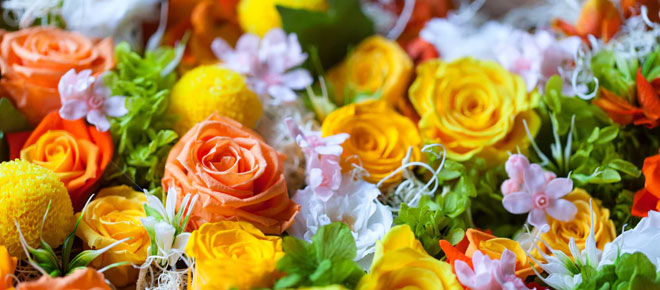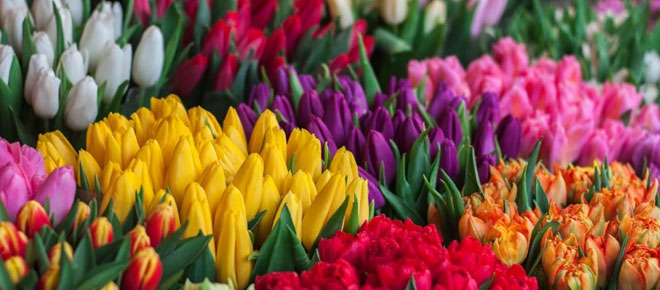The Art of Preserving Flowers

Flowers’ vibrant colors and delicate forms have fascinated us for centuries. Preservation techniques like dipping them in wax, pressing them, or drying them in resin allow us to keep these ephemeral masterpieces long past their natural lifespan.
Air drying is the oldest and simplest method of flower preservation. This technique involves hanging flowers upside down in a dark, warm place.
Air Drying
Whether it’s the bouquet from your wedding or the colorful flowers you picked for the dinner table, drying your blooms is an easy and effective way to preserve their beauty. But how do you go about it? There are many methods of flower preservation, each offering a different aesthetic. Some prioritize preserving the shape and color of the flower, while others celebrate its transformation through desiccation.
Air drying is perhaps the most traditional method of preserving flowers, dating back as early as the Egyptians. This involves hanging the flowers upside down in a dark, well-ventilated area for several weeks. It’s best for whole bouquets or robust flowers like roses, lavender, strawflower, baby’s breath, statice, and thistle. It takes patience, but the result is a gorgeous and natural-looking dried floral.
Another option is to press the flowers. This is a less time-consuming technique that transforms the flowers into two-dimensional versions of their original self. This is ideal for displaying the flowers in decorative ways, as it allows the petals to easily adhere to paper or fabric. It’s also a great option for those who wish to use their pressed flowers in a range of DIY projects.
For a more contemporary approach to flower preservation, try using silica gel. This modern method involves placing the flowers in a container of silica gel, which absorbs moisture and supports the flower’s shape and color as it dries. This is a great alternative to air drying for those who want to preserve their blooms in 3D.
If you’re looking for a truly unique way to preserve your flowers, consider using them in a resin pour project. This is a fairly involved process, so it’s recommended that you work with a professional. It’s important to take all necessary safety precautions, as resin pours require a well-ventilated workspace and a respirator mask.
You can also turn your dried flowers into a delightful potpourri by mixing them with essential oils for fragrance and spices or herbs for texture. Just make sure to store them in a dry place to prevent mildew.
Pressing
There are many ways to preserve flowers for future use, but pressing is one of the most popular. Pressing uses absorbent materials and pressure over time to remove the moisture, resulting in flat dried blooms that can be used for various projects. This technique works best on flowers that have a single layer of petals, such as larkspur (delphinium), cosmos, pansies, impatiens, and wild roses. It can also be used on herbs, small herb stems, and fern leaves.
This is a relatively simple technique that can be done using a heavy book or by purchasing a flower press, which is available online or in some craft stores. If you opt to use a book, make sure it’s one that you don’t mind damaging, since the moisture of the pressed flowers can cause the pages to wrinkle.
When using a heavy book, you can place the flowers between two sheets of parchment paper, or you can use newspaper, blotting paper, or cardstock. You can even try your hand at a DIY flower press, which is similar to using a book but allows you to create a much larger floral display. The downside of this method is that it takes a little more time to complete, and you may find that some flowers do not press well.
For the best results, pick your flowers on a dry day after the morning dew has evaporated. This will prevent the petals from becoming mushy and losing their color, as well as help to avoid mold. When choosing flowers to press, be sure that they are free from blemishes and have a flat bud. Pressing works best on brightly colored flowers, as they will retain the most color in this process.
To begin, lay your flowers on a sheet of parchment or thick cardstock. Place a heavy object, such as another book or a can of food, on top to weigh it down. Press for 2-3 weeks, checking on the progress periodically. Once the flowers are completely dry, you can take them out of the book and use them in a variety of ways, such as adding them to cards, scrapbooking pages, or decorating notebooks and journals. You can even frame them to create a one-of-a-kind floral display. Check out the 1800Flowers.com Coupon Code for potential discounts and savings when considering various flowers for your DIY projects.
Drying in Silica Gel
There are a variety of ways to preserve your special blooms beyond their normal lifespan. One such method is by drying them in silica gel. This process is similar to pressing, but instead of placing your flowers between sheets of parchment paper, they are sealed in an airtight container and allowed to dry completely. The result is a flower that retains a 3D shape and texture. This technique works best with larger flowers, like dahlias, hydrangeas, and roses, as well as those with textured accents.
To begin, select your flower or flowers and trim off any excess leaves. Next, find a glass or plastic container that will fit the entire flower without squishing it. Glass mason jars and Tupperware containers work well. Cover the bottom of the container with a thin layer of silica gel.
Next, place your flowers on top of the gel. Slowly pour more gel around the flower to make sure it is completely covered. Make sure to press down gently on each flower as you go to prevent flattening and destroying the shape of the petals. Finally, give the container a good shake to remove any excess silica gel that has fallen off.
Allow the flowers to fully dry for 2-4 days before opening. Be careful as this can be dangerous as the silica can cause burns if it comes in direct contact with your skin. It is also important to keep the container closed at all times during this period so no extra moisture can get in.
Once your flowers are completely dry, you can use them in a variety of DIY projects. For example, you can frame them to create a beautiful nature-inspired wall hanging. Or, you can use them to make a stunning floral terrarium. You could even use them to create a unique floral wedding bouquet. Another great way to preserve your flowers is by using epoxy resin. This is a more involved process, but the results are stunning. You can create a variety of items, including paperweights, coasters, and jewelry. This process can be a bit messy, so be sure to protect your workspace with an old towel or newspaper and wear protective gloves. Check out the Gifts and Flowers Voucher Code for potential discounts and savings when considering various flowers for your creative DIY projects.
Framing
Framing is the process of contextualizing information to make it more meaningful. This is done by introducing additional meanings through verbal and nonverbal cues. Framing can reduce the cognitive effort a person has to make when processing ambiguous information. It is also helpful in presenting complex ideas.
The concept of framing is very important when it comes to communication and public relations. It describes how news media coverage shapes mass opinion and has a close resemblance to agenda-setting theory.
According to Goffman, frames are abstractions that work to organize or structure message meaning. They are viewed as second-level agenda-setting and have a huge influence on how a topic is perceived by an audience.
Framing can be used by both individuals and organizations. For example, politicians use framing to shape their perspectives on events. For example, if the president wants to be seen as a strong leader, they may use rhetorical techniques such as framing to present facts in a way that supports this perspective.
Another example of framing is when a person receives advice from a trusted friend or family member. When receiving this type of advice, a person will usually believe it even when there is a large discrepancy between the two points of view. This is because of a psychological phenomenon known as social proof.
Visuals can also be used to manifest message meaning. However, they should be used alongside textual framing as they are not as effective on their own. Visuals can convey emotions and other aspects of human nature that text cannot. This is why visuals are often used in advertising campaigns.
When using visual framing, it is important to be aware of potential manipulation and staging. This is especially true when using social media to promote or share information. In addition, visuals are more relatable to reality than written words and therefore can be used as a tool to increase understanding and retention rates.
For example, a video that uses visuals to show the effects of global warming is more likely to be watched and remembered than a news story without images. Lastly, when using visuals to convey information it is crucial to be consistent with the rest of the presentation. This will help to prevent confusion and ensure that the message is understood.
Conclusion
The art of preserving flowers is a timeless and beautiful craft that allows us to enjoy the natural beauty of flowers long after they have wilted. Whether through drying, pressing, or other methods, preserving flowers allows us to create stunning arrangements, keepsakes, and decorations that can be cherished for years to come. With a little practice and patience, anyone can learn the art of preserving flowers and bringing a touch of nature into their home or workspace.






